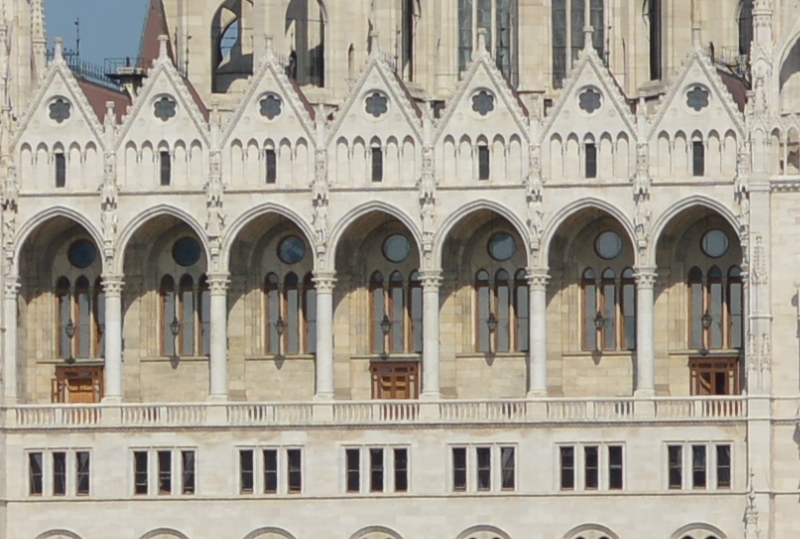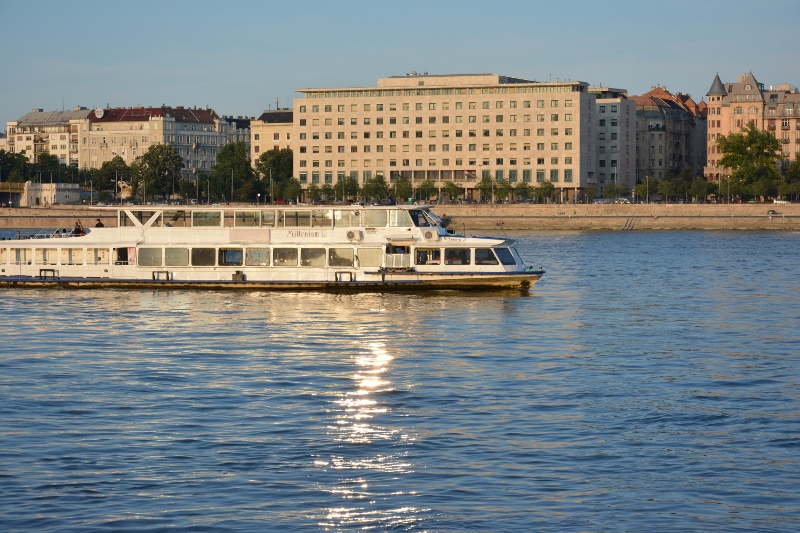Nikon d5200 review
Nikon d5200 review
Last update: 12/05/2015
The Nikon d5200 is an extremely good value discontinued entry level Dslr camera. Essentially the Nikon d5200 has a same sensor as the one in the Nikon d7100 camera. The only difference that in the Nikon d7100 camera there is no AA filter (or OLPF Optical low pas filter to avoid moire patterns) in front of the sensor. In practical terms in picture quality I see no difference between the two camera images. I don’t see the Nikon d7100 any sharper than the Nikon d5200. Basically also the same Nikon d5300 is significantly more expensive.

Nikon d5200 specs:
Lens mount
Nikon F, the lens mount is metal as usual.
Sensor
24 Mpix APS-C CMOS sensor currently the best crop sensor on the market, Nikon calls this size DX
Sensor size
Sensor size: 23.5 x 15.6 mm (crop factor 1.5 x)
Image processor
The camera has an EXPEED 3 image processor.
Metering
The camera has an advanced 2016 pixel metering system.
Built in focus motor
The camera lacks the built in focus motor, which means no autofocus function with older Af-D lenses. Newer Af-s lenses with built in focus motor is works flawlessly. It is important if we buy for example third party lenses like Tamron or Sigma lenses to buy a version with a built in focus motor.
Autofocus is available with AF-S and AF-I lenses, autofocus is not available with other type G and D type lenses, AF lenses (IX NIKKOR and lenses for the F3AF are not supported), and AI-P lenses; non-CPU lenses can be used in mode , but the camera exposure meter will not function
The electronic rangefinder can be used with lenses that have a maximum aperture of f/5.6 or faster
In camera image stabilizer
No. Not yet in any Nikons.
Dust cleaning system
Yes. Image dust off reference data with Capture NX2, which means the camera records the dust spots and corrected in post if possible.
Dials
The camera has one dial as entry level models usually. Obviously it is a marketing decision, not the 1 Dollar plastic element makes the difference.
Compatibility with older manual focus lenses
Officially the camera is not compatible with older lenses.
Dynamic range:
13.9 EV (Iso 100 see later) very nice unmatched for an entry level camera, best Canon Dlsr has 12.1 Ev (Canon 6d)
Color depth: 24.2 bits very nice
ISO range:100-6400 (100-25600) Huge range to play with
LCD screen / monitor
921k dots Flipout screen very nice for video or for stills to use in extreme angles as well
Camera weight
Weight:555 g (19.58 oz.)
Shutter speed range
Fastest shutter speed: 1/4000 s.
File formats
NEF (Raw) and Jpg, only compressed NEF
Jpg sizes
Jpeg sizes (pixel): 6000 x 4000,
4496 x 3000, 2992 x 2000 pixel
Jpg file size
Oh yes the 24 Megapixel sensor makes huge files, which most cases I guess not needed.
Jpeg size (Mbyte): 6,8 – 15 MByte
Features: In camera HDR, 1 storage slots, Built in flash, Video with 1080/24, 1080/30, 720/60, 720/50, 640/424 formats.
Exposure compensation range:
The Exposure compensation range is +-5 EV, which is very nice for an entry level camera.
[do_widget Text]
Introduction:
The Nikon d5200 has the same 24,2 Mpixel Toshiba sensor as the Nikon d7100 and perhaps similar than the Sony sensor of the Nikon d3200, the output is not the same as dynamic range and others, see later. I was very interested in this camera myself, because of their reported very high picture quality wide dynamic range and excellent high iso performance.
Picture quality in general:
Picture quality is excellent. The pictures comes out of this camera are better than the pictures of the Canon 7d or the Nikon d7000. Plenty of nice detail, lots of colours can be found even in shadow areas. The pictures are very useful up to 6400 iso. Some grain are present if we see the pictures in 100% but in normal screen size are very good. The sensor is nearly identical that of the Nikon d7100 but it has an AA filter in front of it, while the D7100 doesn’t have. I don’t see too much visible difference between the pictures of the two camera.
Autofocus:
The autofocus system inherited from the Nikon d7000 is surprisingly fast and accurate. In good light almost instant, with af-s lenses such as the Nikon 35/1.8, Nikon 18-105 vr or Nikon 16-85 vr. The 39/9(cross type) focus points are more than enough for nearly anybody.
Autofocus modes: Single af, 39, 21, 9 points dynamic area af, auto area af, 3D tracking, live view, face detection
Focus point/cross type: same autofocus system as the Nikon d7000 has, very nice and snappy, 39 focus points and 9 cross-type points
Focus sensitivity range : -1 EV to +19 EV (ISO 100, 20 Celsius temperature)
[do_widget Text]
High iso performance:
The Nikon d5200 camera has an exceptional high iso performance. I wouldn’t hesitate to use pictures up to 6400 iso. If it is needed even in 12,800 iso, but here don’t expect miracles. Compare to other Dx sized cameras on the market this iso capability is simply unmatched (January 2014), except the Nikon d7100 has this quality. On the other hand though Canon cameras produce different looking results, perhaps with bigger contrast.
See Below Nikon d5200 iso 6400 Nikon 35/1.8 1/4000 s.

Crop mode
The video at high frame rates uses the crop mode (as far as I know). The crop factor is 1.3x. It means from the 24 Megapixel we have 14 Megapixel in the center. Otherwise for stills the crop mode is not there in the Nikon d5200. The crop is the same as cropping the center area and in the Nikon d7100 it is possible to shoot 7 frames per second instead of 6 frames per second in burst mode.
Nikon d5200 Burst mode
The camera can make 5 frames per second or 3 frames per second and totally can make 35 fine or 100 normal jpgs and 8 NEF files in burst mode. Most people obviously want to shoot in Raw and more buffer would be better.
Self timer
The self timer can make 1 to 9 exposures in the intervals of 2,5,10,20 seconds.
See Below Nikon d5200 iso 12800 Nikon 35/1.8 In smaller sizes the quality is very good.

Compared to Nikon d7100 and Nikon d3200:
The most interesting parameter is dynamic range where Nikon has an advantage over Canon lately. At below table can be seen the three Nikon cameras mentioned earlier. For Comparison the Canon 5d Mk II has 11.7 EV dynamic range, the Canon 6D has 12.1 EV dynamic range.

Information: Dxomark.com
At above table can be seen that the Nikon d7100 and d5200 sensors are almost identical, while the d3200’s sensor is a little bit behind but still excellent. It is also can be seen from the table that the d5200’s 13.9 EV connected to Iso 100 sensitivity, at iso 400 the dynamic range is approximately. 12 EV, at iso 800 11EV, at Iso 1600 approximately 10.5 Ev.
Nikon d7100 vs d5200 ?
Which one to choose ? If money is not a matter I would choose the d7100. The d7100 has an improved autofocus system, especially for low light, better hand-grip, bigger viewfinder and easier controls over the d5200, the D7100 sensor has not an AA filter, the d5200 has. The d7100 lacks the flipout screen the d5200 has. The d7100 has 1/8000s shutter speed, the d5200 has 1/4000s. But the D5200 is also very tempting: the smaller size, and less weight is a bonus for me lately, prefer in spite of the smaller and less comfortable hand grip. No iso button on D5200 and auto iso is not always produce the settings I would prefer. To change iso on the D5200 doesn’t take long even there is no dedicated iso button. Several seconds and possible to change the Iso. Hence the price difference is high, I would live with the d5200 even is the usage is not ideal, the d5200 has not so much direct controls as the d7100. But the d7100 is a more serious camera overall, you don’t have the same output from the d5200 in auto setting.
24 Mpix:
According to me doesn’t make any significant difference for most users, I say this as a bird photographer. Several bird photographer uses their high end 500mm f4 Canon lenses with a 8 Mpix camera body. If this small pixels helps to gain better low light sensitivity than it is ok. Smaller pixel, smaller noise. Don’t be fooled you can sell your house to find a lens to serve this 24 Mpix sensor properly with a long tele, perhaps always shoot in raw, even the 35/1.8 at sharpest setting doesn’t produce sharp pictures at 100%, see below. In screen size the pictures are great, in 100% is not sharp.

Nikon d5200 with Nikon 35/1.8 at f5.6 1/1000 s.

Nikon 18 105 with Nikon d5200
Bigger samples, click on the thumbnail:
Flash
The camera has a built in flash. The flash synch speed is 1/200s.
Video:
I’m not a video expert, according to me the video quality is very good, but the picture jumps up and down, focusing algorithm is unknown for me (shutter button can use to focusing), Dsrl’s are perhaps not designed for video, but in case for it is needed it is possible to use it.
The camera’s excellent sensor is serve very good as well for videos, like high iso and dynamic range, as the 60,50 fps frame rate. For this high frame rate the camera uses a crop mode though. In Manual mode lots of settings available for video, which the Nikon d5100 lacks. The new Canon 70d has an improved video capability, with double pixel count for focusing.
Max. length of clips: 29min 59 sec
Video format: MOV
Video compression: H.264, Mpeg 4
Audio recording possibilities: Built in monaural or external stereo microphone, the sensitivity is adjustable
Video output: NTSC, PAL
White balance modes
Auto, fluorescent (7 different types), incandescent, preset manual, direct sunlight, flash, cloudy, shade, all with fine-tuning except preset manual
Scene modes
There are many scene modes.
scene modes ( landscape, portrait, child, sports, close up, night portrait, night landscape, party/indoor, beach/snow, sunset, dusk/dawn, pet portrait, candlelight, blossom, autumn colors, food)
Auto modes (auto, auto [flash off]); programmed auto with flexible program , shutter-priority auto, aperture-priority auto (); manual, special effects modes ( night vision; color sketch; miniature effect; selective color, silhouette, high key, low key)
What is missing?
Not many things. In fact compare to other offerings in the market you get perhaps the best value camera at the market today of any brand, not by chance that Nikon quickly release the new D5300 with significantly higher price. What is really missing is a built in focus motor for several lenses, metering with older lenses, and the two dial and several features of the Nikon d7000, but simply don’t get anything for this price.
Lenses
My preference on this camera will be the following lenses: Nikon 16-85mm Vr (on a tighter budget the Nikon 18-105 Vr, or the 18-55 vr which is better at wide angle than the 18-105 but I found this range quite limiting), Nikon 35mm f/1.8 G, other possibility for advanced shooters the Tamron 17-50mm f/2.8 with a built in focus motor.
Recommendation:
The d5200 is a very nice little camera with excellent picture quality. If you want Nikon system, it is highly recommended ! This camera has an excellent value, the excellent new 24 MP sensor, very good video functions, snappy 39/9 autofocus system, and small size with a fully articulated screen makes it very desirable.

